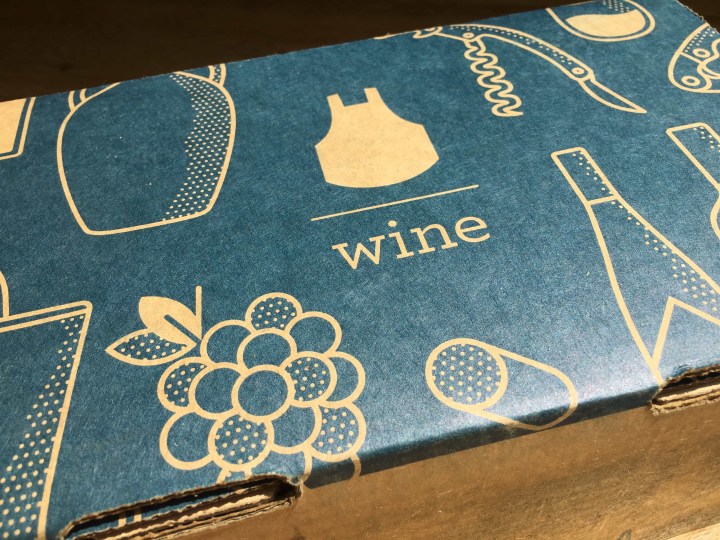
Blue Apron Wine is a subscription for people who love trying new wines as much as they love great food. You may be familiar with the Blue Apron Meal Delivery Kit subscription, which sends boxes of fresh ingredients to make exciting meals at home. The wine subscription is separate from the meal subscription, but it’s designed to complement it.
Here’s how it works: every month, for about $11 per bottle ($65.99/month, including shipping and tax), Blue Apron sends you 6 bottles of wine, plus tasting notes and pairing recommendations. The wines are selected to pair perfectly with the meals in the Blue Apron kits. The bottles are 500 ml, or 2/3 the size of a standard bottle, which, in addition to being adorable, means that you and your dining partner can enjoy your entire bottle with your meal without regretting that additional glass needed to finish a standard-sized bottle.
Blue Apron pairs with wineries around the world to bring a wide range of new and interesting wines to you each month. I love wine, and I love food, and I love everything about the idea of this subscription.

The wine comes securely packaged in a clever little box. Keep in mind that someone 21+ will need to sign for it. Everything is in great shape when it arrives, and the packaging is, happily, recyclable cardboard.
DEAL: You can try out your first box of Blue Apron dinners for $30 off with this link.
Blue Apron Wine now allows you to select your wines! You can go all white, red, or mix it up. You could even do a rose box and squeeze the last bit of pink wine out of summer. I switched out the rose in my box this month–I wanted a Provence–and it was super easy to do.

If you’re wondering what a 2/3-sized bottle looks like, here is one of the bottles with a standard-sized bottle next to it. You’ll get about 3 1/2 standard glasses in a bottle, or a generous pour plus a top-off each if you’re with a partner.
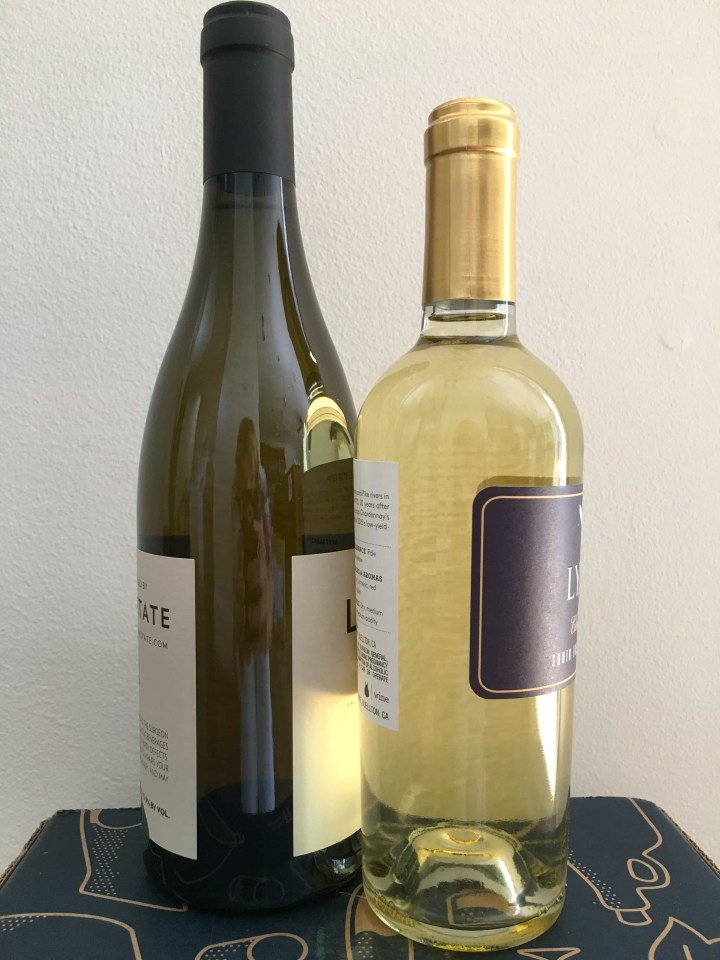
Each box comes with a great collection of tasting notes. Blue Apron tells you a little bit about the winery and how the bottle was made, plus the region at large. Because, come on, you didn’t REALLY know where the Central Coast was, did you? The info details the color, body, and structure of the wine, and also gives some thoughtful food pairings for each bottle. The info is terrific – wine is not scary, and tasting it should be fun and informative. Data is your friend.

Summer has, sadly, passed us by in the South, but it’s still warm enough to cook out in the evenings. We drank our wines over several days with dinner.
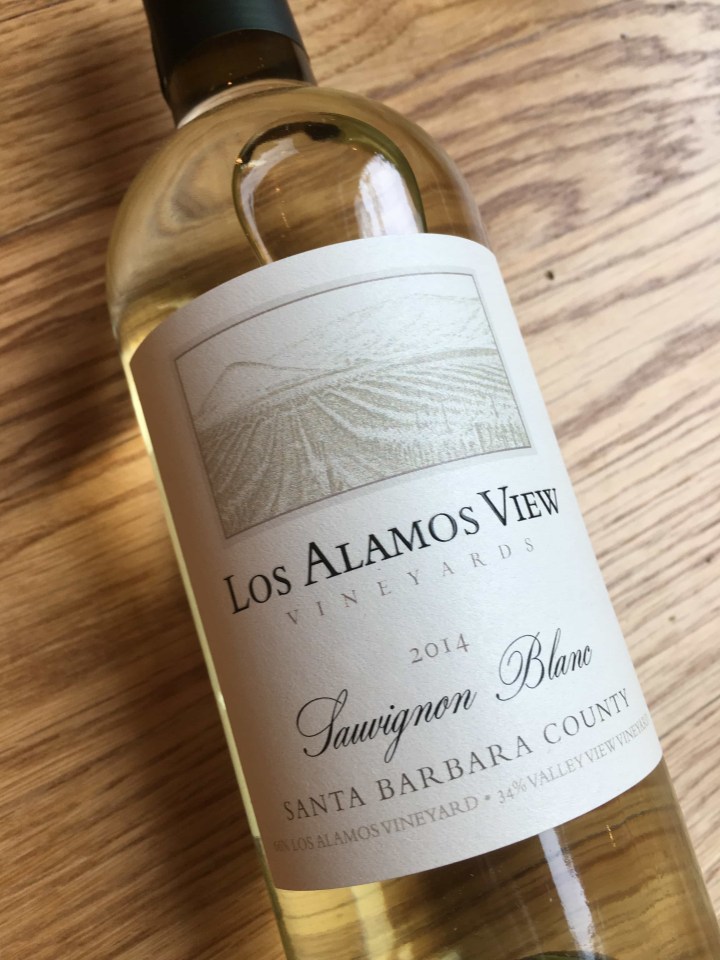
First up was the 2014 Los Alamos View Vineyards Sauvignon Blanc. It is the new Chardonnay for go-to white wine. Happily, a lot of it is still good quality. This wine comes from Santa Barbara and leans on the fruity end of the SB spectrum.
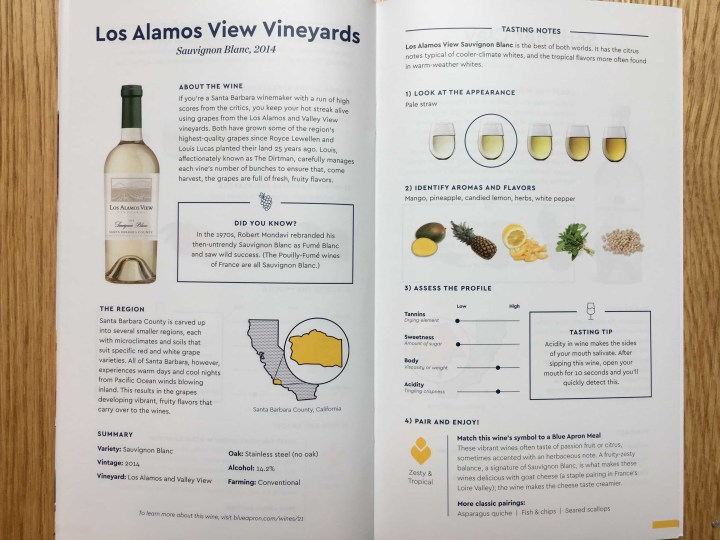
The Los Alamos View is wheat-colored in the glass with a light/medium body. Not much nose to it when chilled, but it developed a sweet citrus nose as it warmed up in the glass. The flavor is similarly slow to develop, with it gone almost before you can identify it. As it warmed up, it picked up some bright citrus notes, like pineapple, with a grassy/herbal finish. I didn’t get any of the pepper mentioned in the tasting notes. This is a tasty wine that went surprisingly well with Blue Apron Bucatini with Heirloom Globe Tomato Sauce that we had with it. We probably drank it a bit too cold, since it improved as it warmed up over dinner. I’d try cool room temperature. Lovely!
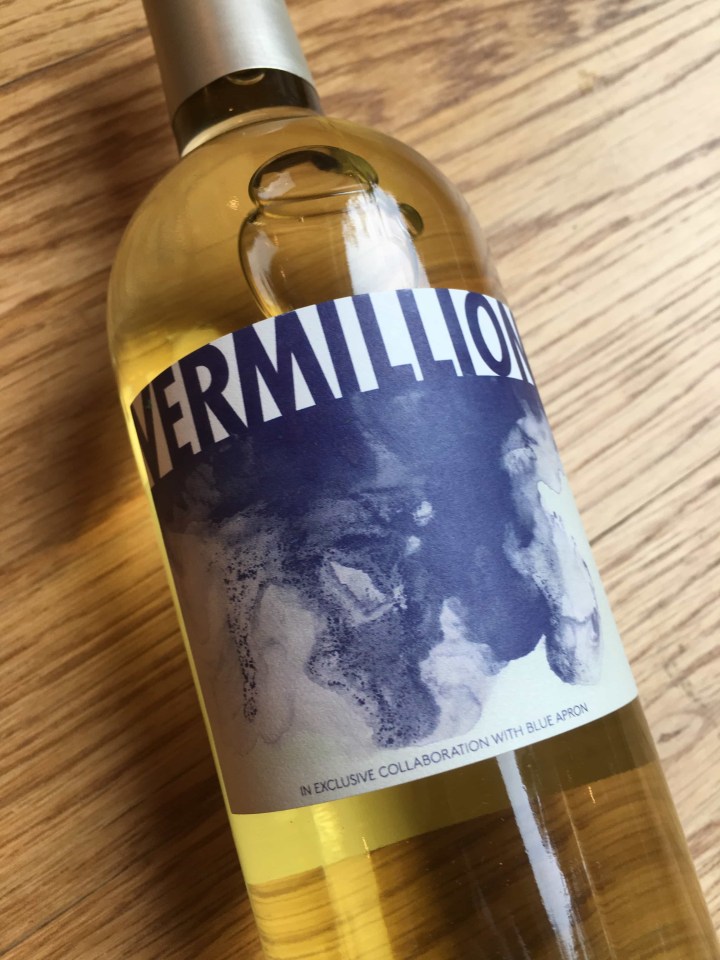
Another California wine, this one is a blend of mostly Viognier, Chardonnay, and Sauvignon Blanc. The tasting notes really hit hard on this being an unusual and fun blend.
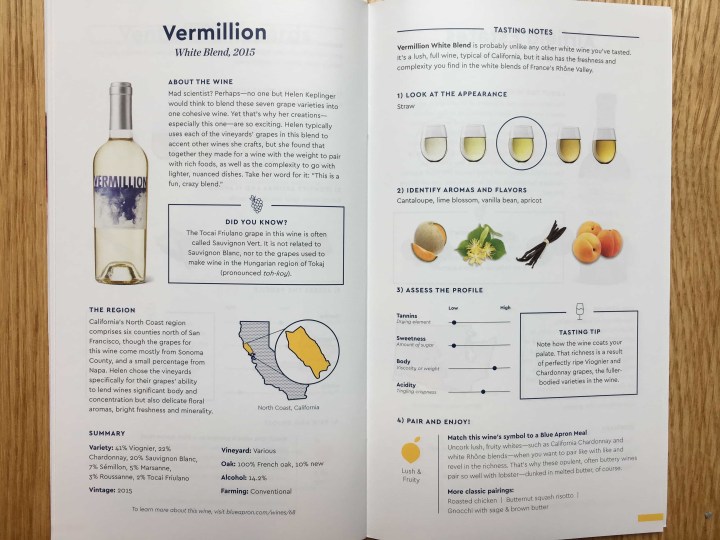
The wine is bright yellow in the glass, with a quite heavy mouthfeel for a white. The aroma is all oak and melon, and the flavor was an oak bomb. I didn’t taste any of the fruit suggested in the notes, just a sweetish oaky flavor with no nuance. We had this with salmon, which should have been an excellent pairing, but the oak clashed with the butteriness of the fish. Honestly, this was a miss for me. We drank it off-chill.
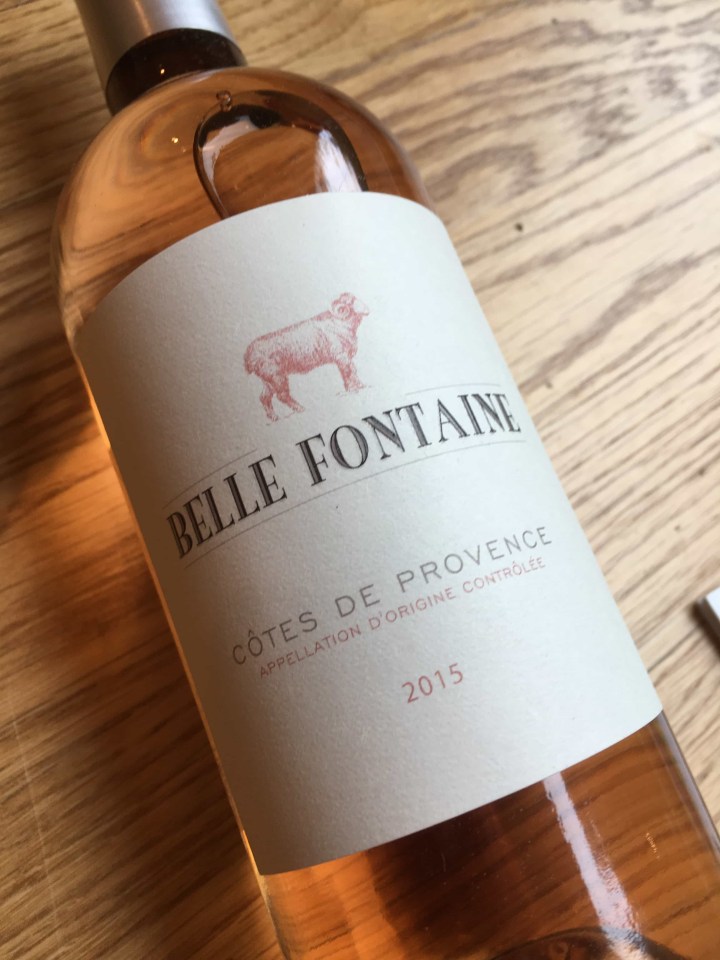
On to what will probably be my last rose of the season, the 2015 Belle Fontaine Cote de Provence Rose. Blue Apron recommended a fruitier rose, but I really wanted to finish rose season with a clean Provence rose, so I switched it out for this pretty bottle.

The Belle Fontaine is a tad pinker than a lot of Provence roses, though it’s not as pink in the glass as it is in the tasting notes. It is just a bit heavier in mouthfeel than a typical Provence, but it has the same barely-there nose of herby fruit. It leads with tart berry notes and slides quickly into a sweeter finish, but the acidity of the wine keeps this fresh and clean. It’s a great outdoor wine, and went well with the grilled chicken sausage we had for Friday dinner. Cold but not icy for this wine.
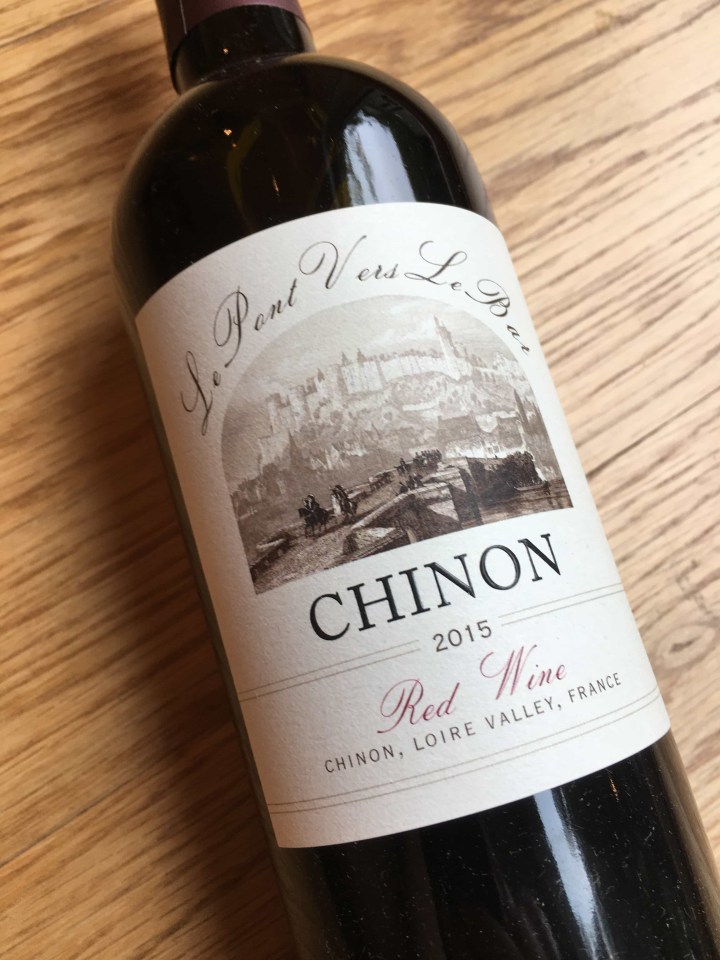
On to a red wine, the 2015 Le Pont Vers Le Bar Chinon. This is a Cabernet Franc, one of my very favorite reds to drink with food. It’s relatively low in alcohol (12.6%ABV) and the fruity, tannic bite of this wine goes well with lots of meals.
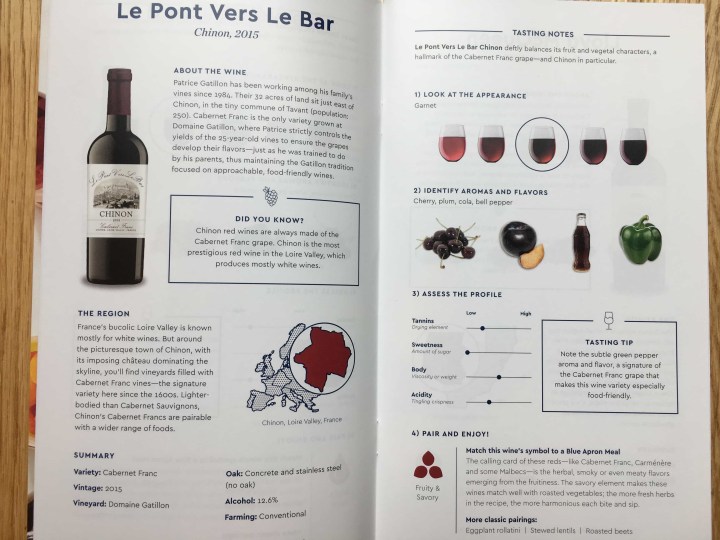
The Le Pont is a medium violet in the glass with a strong nose of red fruit and pepper. It has a medium mouthfeel. The fruit flavors hit first but are almost immediately swallowed up by that green pepper that is so characteristic of Cab Franc. The finish reminded me of green olives, with a tannic bite that lingers. This was such a tasty wine! We had this with turkey lasagna, and the wine complemented the tomato in the sauce really well. It was my favorite wine of the bunch and got me excited about a fall and winter of red wine. We drank it at cool room temperature.
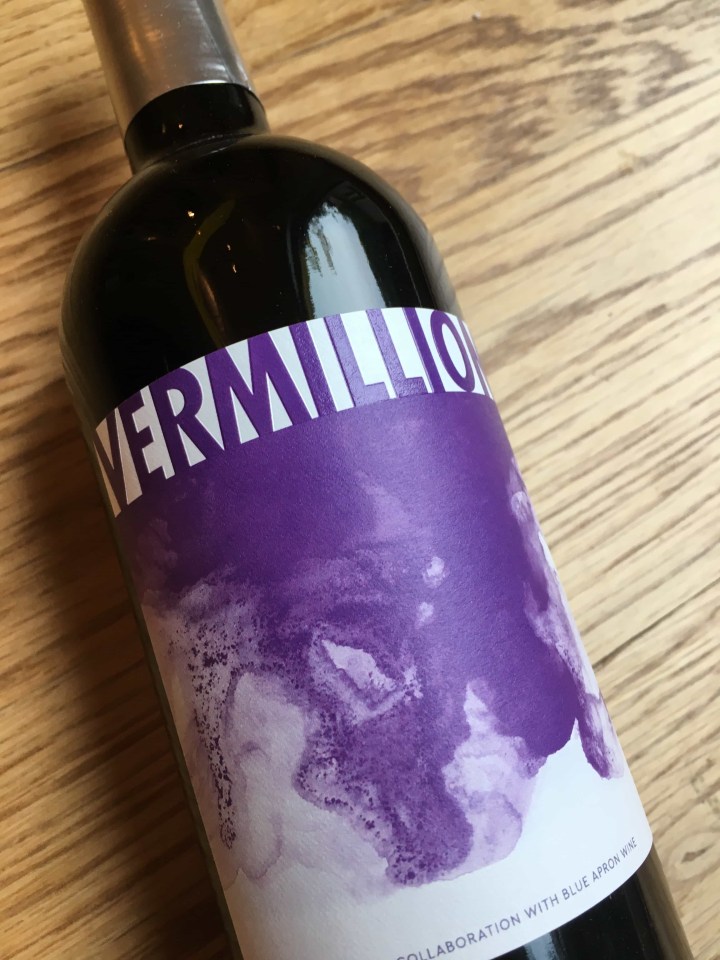
This is another blend, mostly Grenache and Mourvedre.
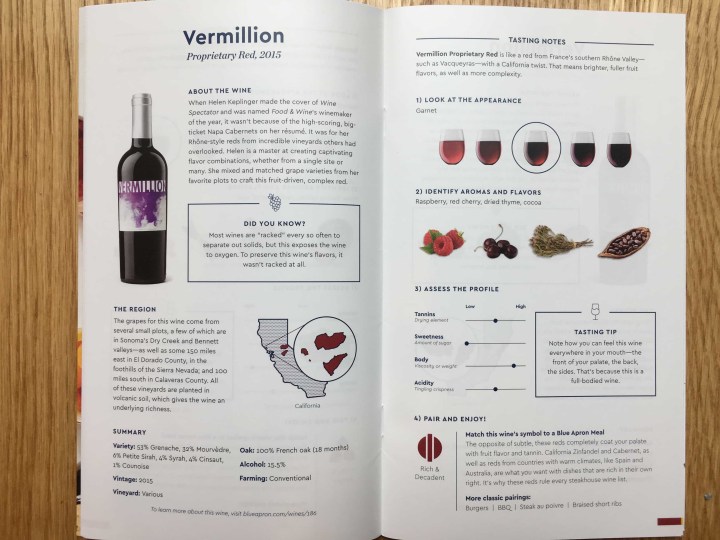
I was a little side-eye on this wine, given my reaction to the Vermillion white blend, but I never let preconceived notions get in the way of at least trying a wine. The Vermillion red is medium violet in the glass with a swirl of fuchsia on the edge and a fairly high ABV (15.5%) to match. It has a strong nose of red fruit and herbs and a medium/heavy body. The berry flavors predominate, with the herbs coming into the back end, and finishing with more herbs and oak, with medium tannins. This wine is better-balanced than the white blend, and the tannins keep it from being a flat oak bomb. It went pretty well with our pork tenderloin and would also complement a redder meat dish, like roast or even barbecue. Cool room temperature for this wine.
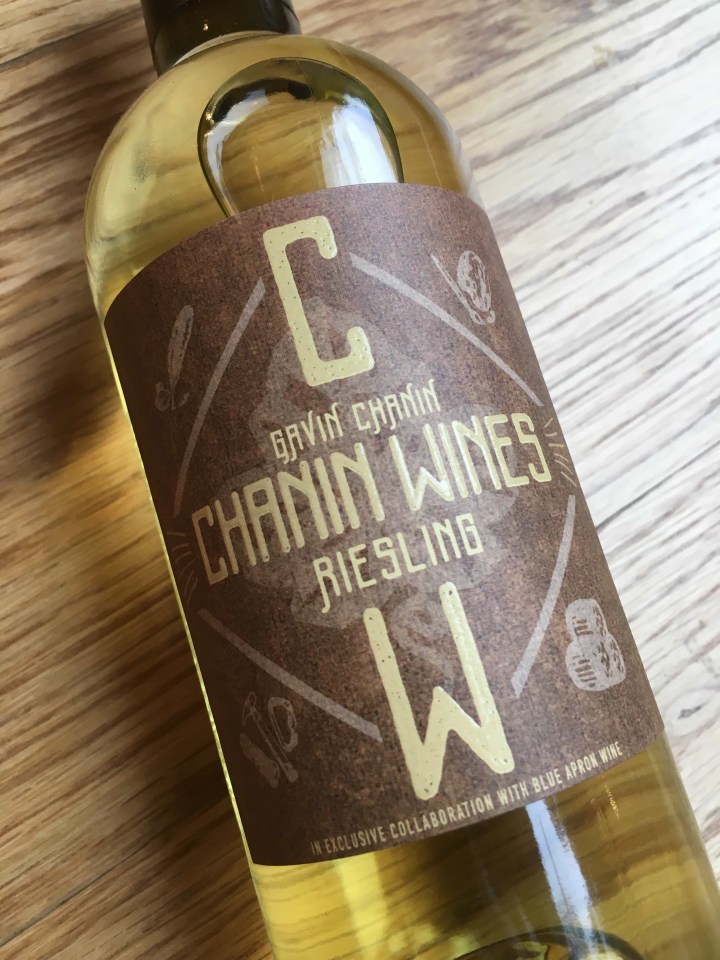
Back to white for our last wine, the 2016 Chanin Riesling, a new bottling for this winery. California is not the place I think of when considering Riesling, which is traditionally made in the Rhine Valley. Germany and California have pretty different climates.
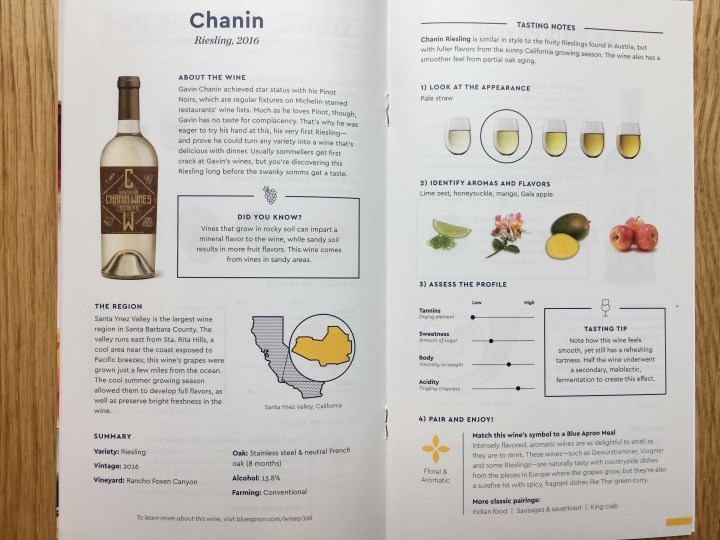
The Chanin Riesling is straw-colored in the glass, with the typical weighty mouthfeel of a Rhone wine. The nose is quite prominent, with floral and citrus notes. The flavor drops the citrus for sweeter fruit, but the finish is quick and very clean, with a high acidity that wipes out any sweetness. I was pleasantly surprised by the balance in this wine; I don’t think I’d be able to identify it as Riesling in a blind tasting, but it’s interesting, and I enjoyed drinking it. We had it with lentils and rice, which was a decent pairing, but it would go well with seafood or grilled chicken, too. We drank it off-chill, which I think is right.
And that was our August box of Blue Apron Wine! All but one were California wines this time, which is kind of fun. It was fun to try a couple wines, like the Chanin Riesling, that you can’t get anywhere but a Blue Apron box. We have been really pleased with the variety and quality of this wine subscription. If you’re a Blue Apron subscriber, I’d definitely give the Wine subscription a try. The recipe pairings are spot-on, and it’s a great way to try a wine or two you might not know about.
By the way, Blue Apron has a new system for pairing its wines and its food subscriptions, somewhat like you might have seen in nicer grocery stores — the wines are categorized by type (crisp & minerally, plush & fruity, etc.) and then that symbol shows up on the food recipes. Pair any wine of the recommended type to the food, and voila — you have a great meal!
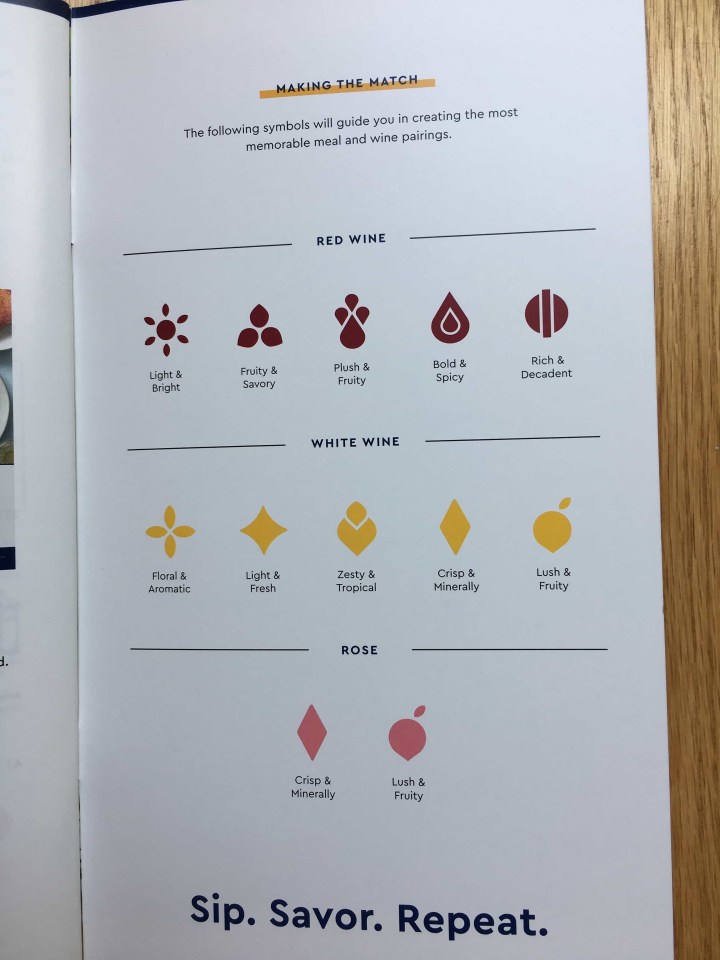
Have you tried Blue Apron Wine? Are you done with roses or are you still hanging onto summer? Tell us in the comments below!




Comments